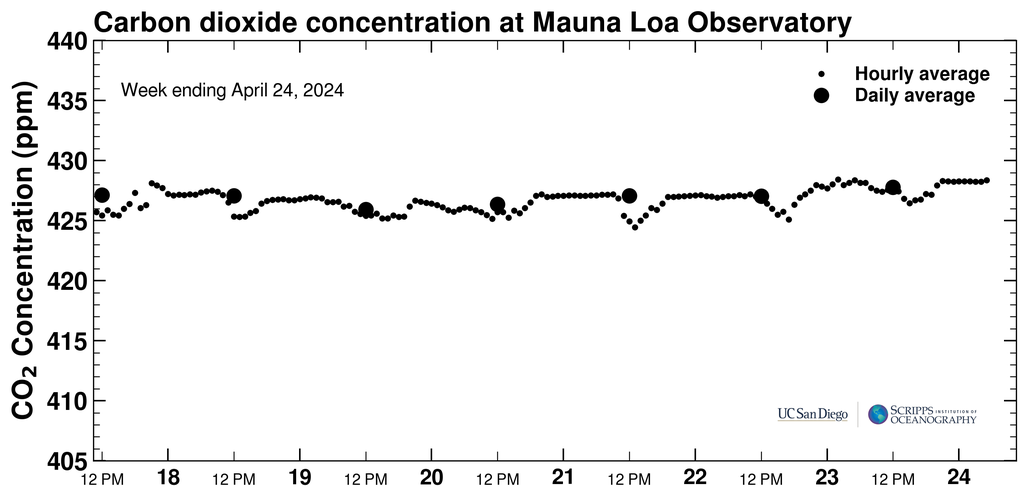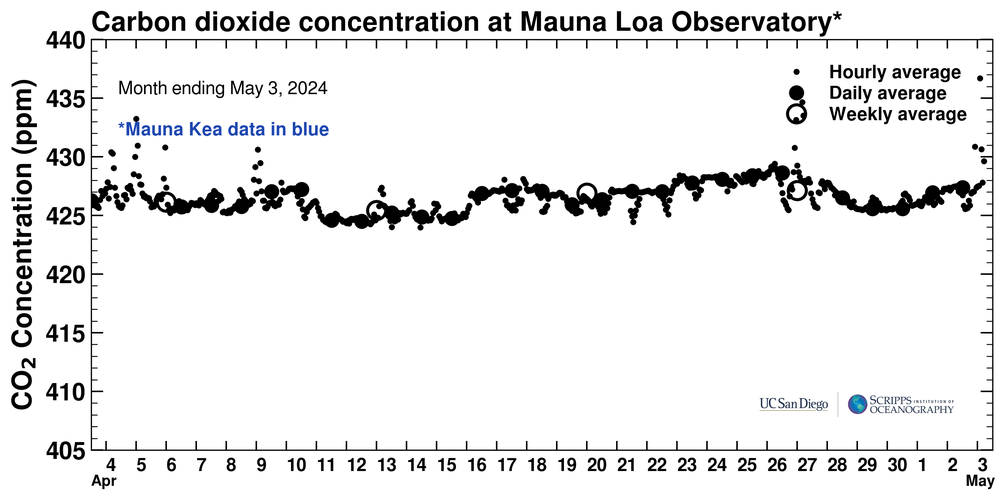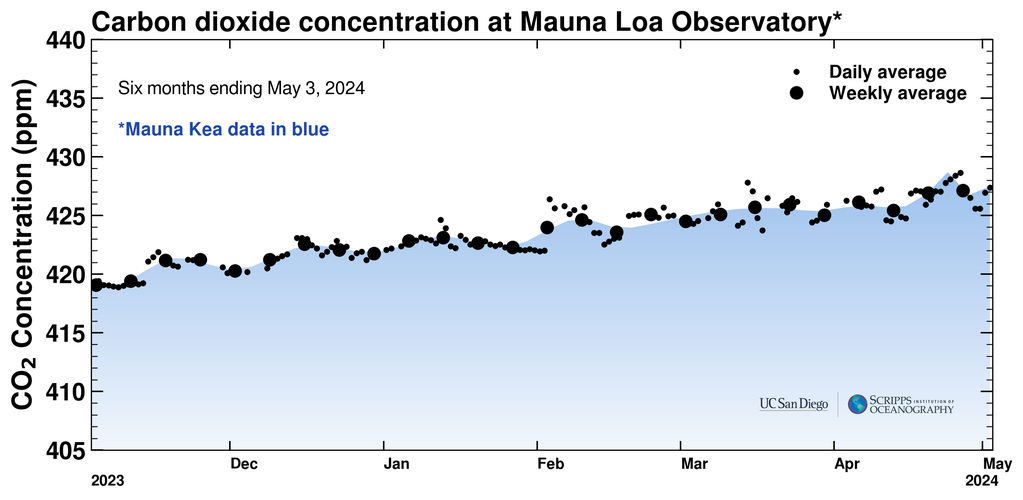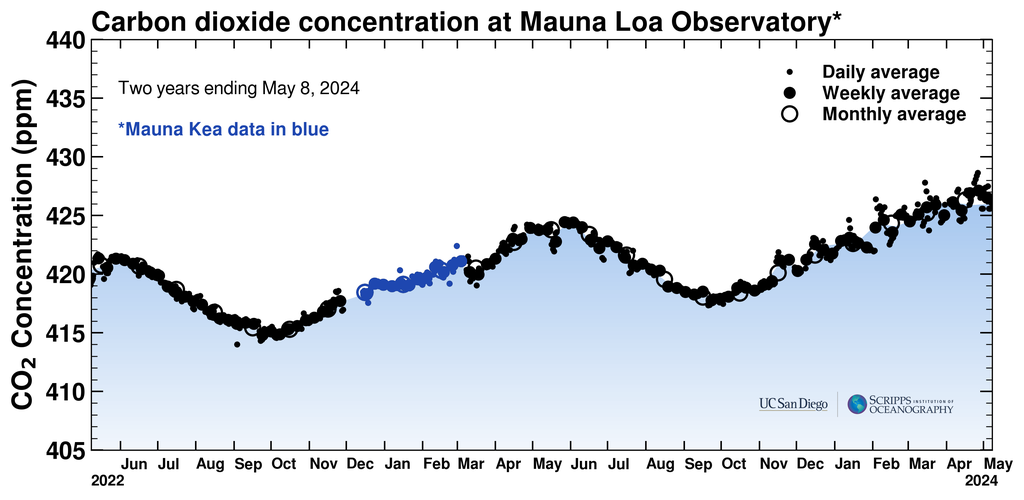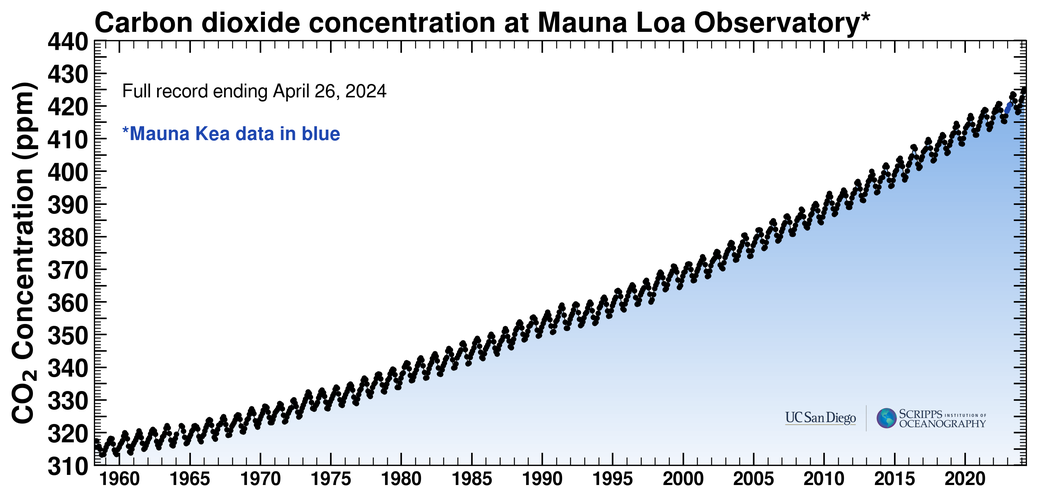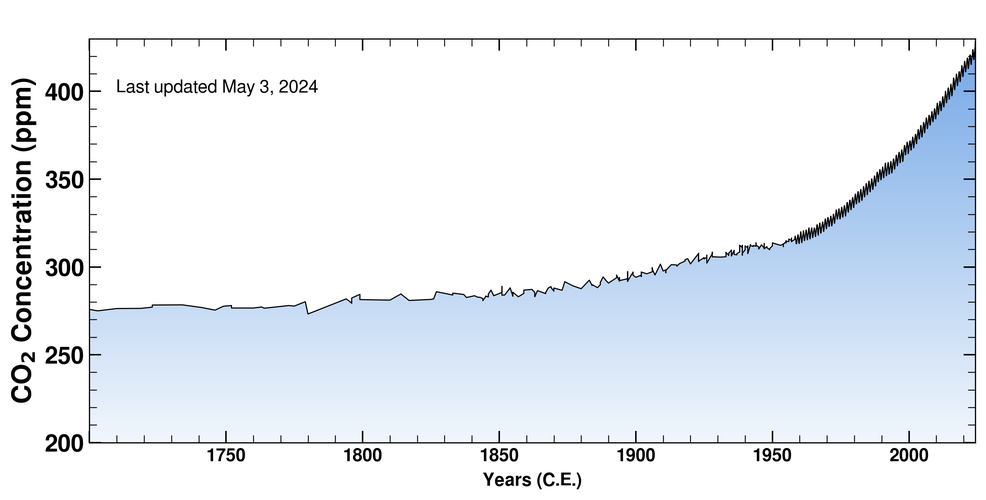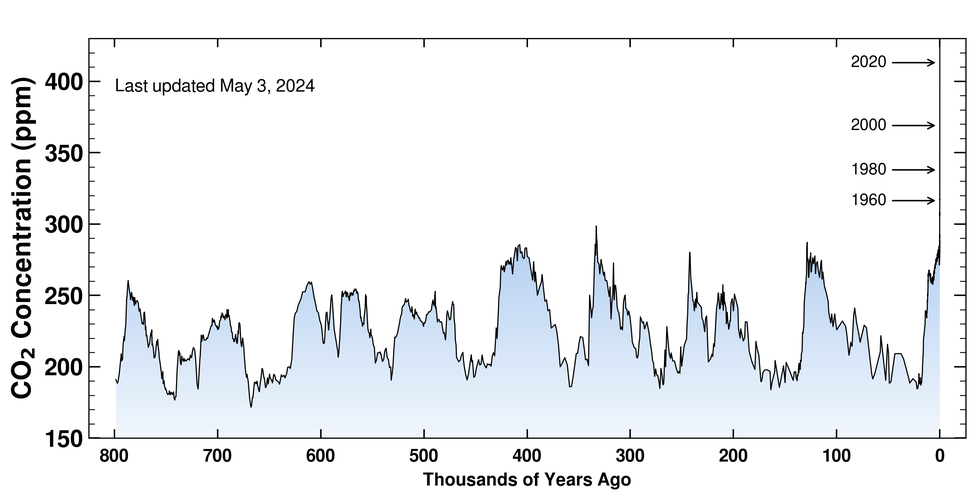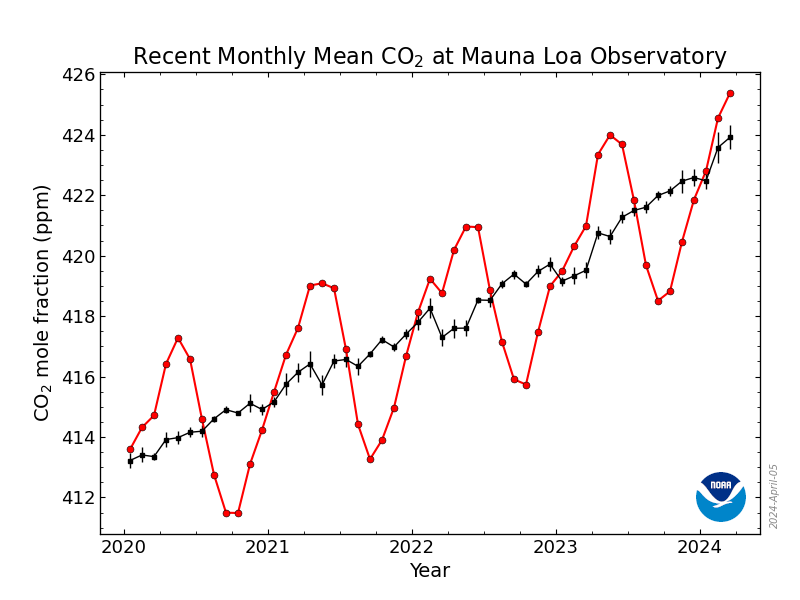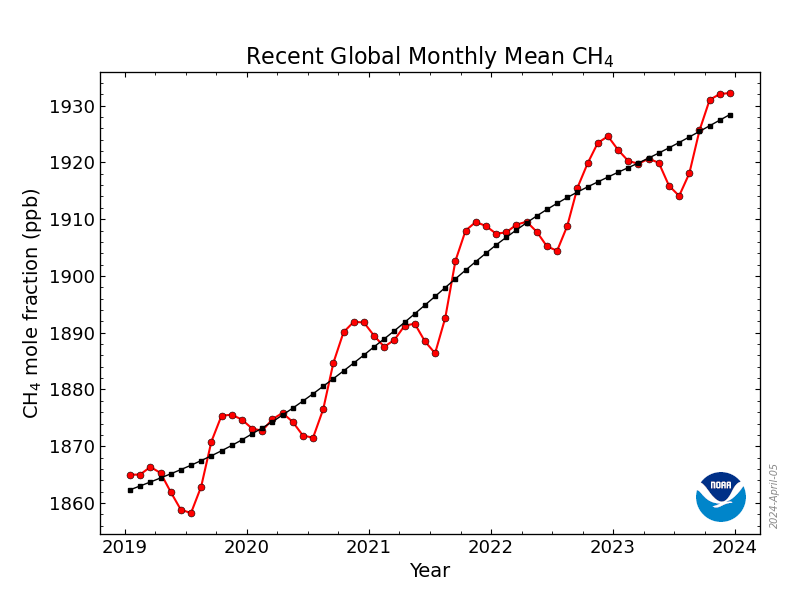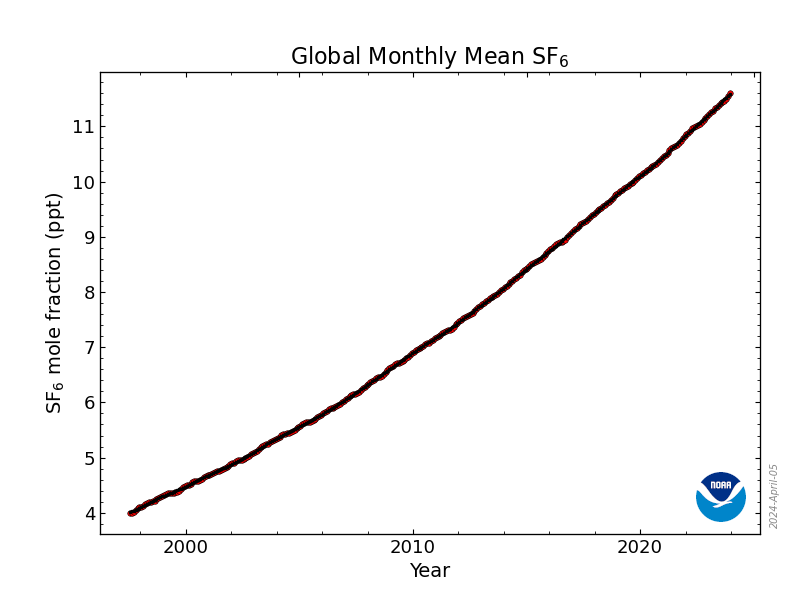Greenhouse Gases
Current climate conditions trends and averages: Greenhouse Gases (GHG’s) and relevant data products.
- Contents
| Note: Missing graphics may be due to temporary server maintenance (or the occasional gov. shutdown). |
Increased Emissions
Carbon Dioxide Methane, Nitrous Oxide, CFC’s*
*Chlorofluorocarbons are Industrially produced High GWP (Global Warming Potential Gases)

AGGI – Annual Greenhouse Gas Index
The warming influence of greenhouse gases
The warming influence of greenhouse gases in the atmosphere has increased substantially over the last several decades. In 2021, the AGGI was 1.49, representing an increase of 49% since 1990, the base year for the Kyoto Protocol (an international agreement in which countries pledged to reduce greenhouse gas emissions to below 1990 levels). Carbon dioxide (CO₂) is the largest contributor to radiative forcing. Year-to-year variations in how much the AGGI value increases generally correspond to how much CO₂ increases each year, because CO₂ is responsible for about two-thirds of the radiative forcing among all greenhouse gases.

Scripps CO2 Monitor
Source: https://keelingcurve.ucsd.edu/
Recent Mauna Loa CO2
Source: https://www.esrl.noaa.gov/gmd/ccgg/trends/
Recent Global CO2
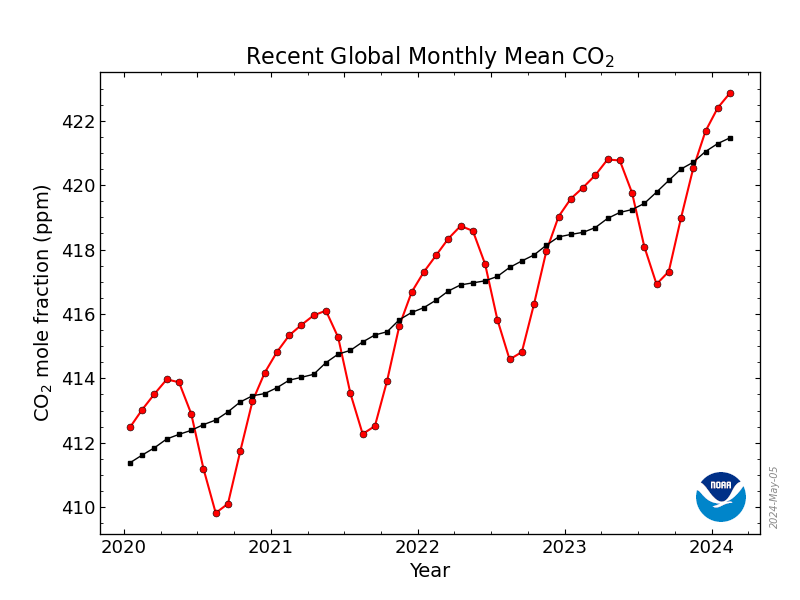
Full Mauna Loa CO2 record

Global CO2 Emissions from Fossil-Fuel Burning, Cement Manufacture, and Gas Flaring: 1752-2006
Global Carbon Dioxide (CO2) emissions from fossil-fuels 1900-2008

Source: https://www.epa.gov/climatechange/emissions/globalghg.html
Methane
Source: https://gml.noaa.gov/ccgg/trends_ch4/
Nitrous Oxide (N2O)
Source: https://gml.noaa.gov/ccgg/trends_n2o/
Sulfur Hexafluoride
Source: https://gml.noaa.gov/ccgg/trends_sf6/

